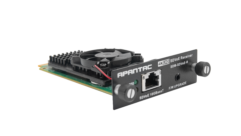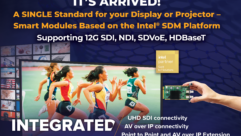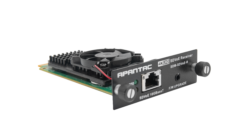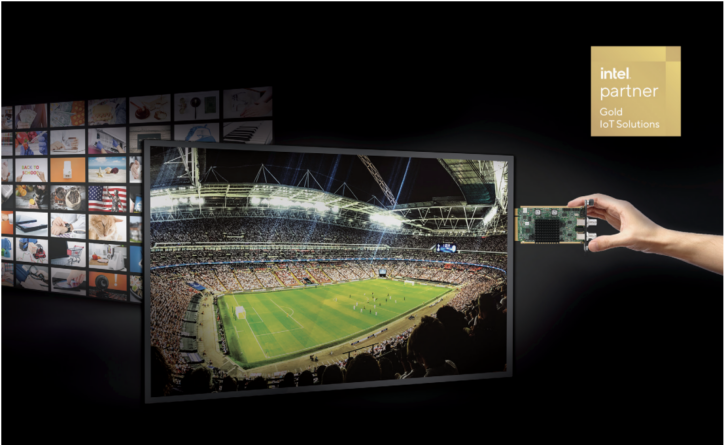
Standards have long been sought in the AV industry. There has been innovation, cooperation, and progress to that end, both with proprietary and open standards alliances, and people will continue to work towards that goal, especially with the growth of AV over IP. At the same time, for many display applications, we already have a standardized platform available that can simplify systems design, integration, and future viability of video display for current and future formats.
Intel®’s Smart Display Module (SDM) specification is an evolution from its Open Pluggable Specification (OPS); SDM was developed to support bi-directional 4K and beyond with the flexibility OPS brought to UHD. SDMs deliver intelligence, standardization, interoperability, and connectivity through simple form-factors—a large and small version–that integrate directly into displays. The SDM slot on the display supports modules that are designed with CPUs, FPGAs and ASICs making each SDM-enabled display or projector capable of almost any job, and future-flexible for applications and formats yet to come. SDM modules transmit signals directly to the display and are powered by their reliable internal power supply. They take the place of external format converters eliminating external power supplies and reducing components and cabling.
A signal conversion platform
Signal transport and conversion is the lifeblood—and the challenge–of AV integration. We have learned to rely on (or make do with) various formats even as newer formats continue to develop. The simple advantage of Smart Display Module (SDM) interfaces is they are agnostic, a blank slate until given a role and a format. Increasingly display manufacturers, such as Panasonic and Sharp/NEC, have understood that enabling display endpoints with an SDM slot provides the kind of system flexibility that systems designers and integrators need, including the flexibility to make format and conversion decisions later in the process, or to implement new formats at a future date as needs change. With fewer points of failure, reliability is improved, and troubleshooting is simplified.
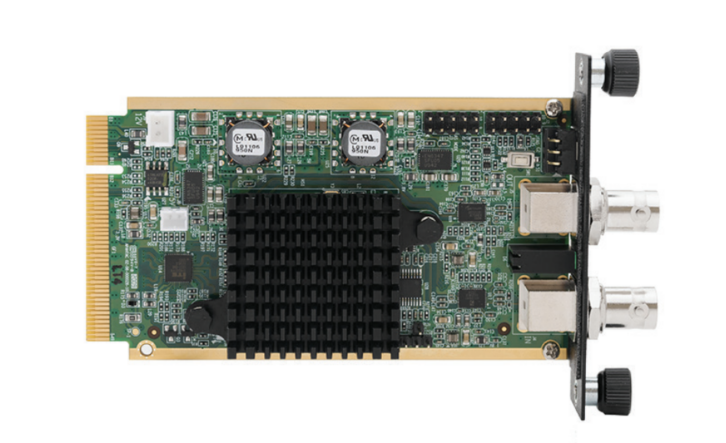
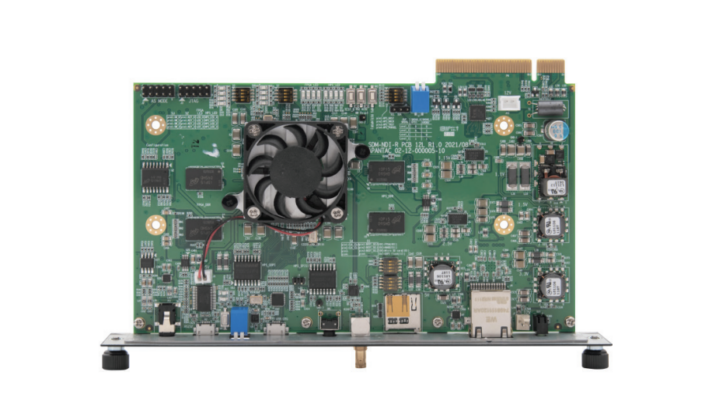
Today, Apantac Smart Display Module (SDM) interfaces provide access to the toolkit of formats designers and integrators need including NDI (receiver or quad-split), SDVoE over fiber or copper receivers with video wall and multiviewer functions, 12G SDI (receiver or quad-split), HDBaseT, HDMI, UHD, point to point, and more to come. Apantac’s experience with Intel’s legacy OPS platform made for a natural transition to the high-resolution, bi-directional SDM platform and its current and future format potential.
On the supply chain and flexibility
The earlier Intel OPS platform was supported only by a proprietary connector made by a single company. SDM is supported by ubiquitous PCIe connectors. Beyond that, the SDM platform supports the kind of adaptability that sometimes comes up from supply chain issues; designers and integrators have the option to easily make changes to transport formats with SDM-enabled endpoints. For example, in the design stage, it may become necessary to accommodate variables that could be IT-related, distance, supply chain, or environmentally related. That can be handled at the SDM interface level without a cumbersome cabling and endpoint redesign. Likewise, if future needs dictate a change, it’s a simple interface swap. This same flexibility translates to rental and staging inventory, where SDM-enabled displays and a few cards can provide the options that used to require a display for every format.
ASIC and FPGA
Because SDM is an Intel platform it is naturally supported with FPGA; which supports flexibility without having to change the endpoint. Many products are rightly built around ASICs with all the functionalities and the product built around it. There are many good reasons to do this but on future flexibility, FPGA leaves doors open that ASIC does not. If an ASIC-based product doesn’t support Dolby it never will. With an FPGA-based product, new capabilities can be added, new refresh rates supported, new compression formats leveraged, and the lifecycle of an SDM-based product can be longer because of that flexibility. As long as there is an SDM slot there is, technically speaking, there is room for whatever imagination can come up with.
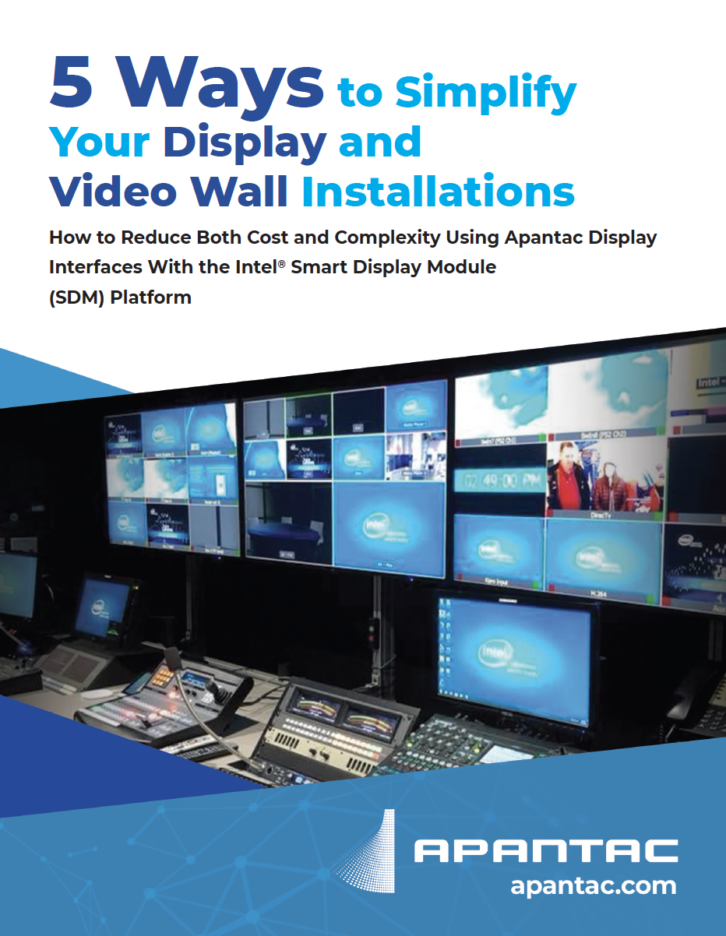
In conclusion
SDM is an Intel standard platform that Intel continues to innovate. SDM-enabled endpoints can be empowered with FPGAs to support a range of features now and in the future. SDM conversion interfaces such as those from Apantac, allow any SDM-enabled endpoint to support current and future formats. SDM interfaces eliminate the cables and components required for external converters and take advantage of the compact SDM slot that lives on the display. Systems designers and integrators have more options for transport and conversion and can adapt the system easily later in the process, and/or in the future as new needs arise or advanced formats emerge.
In 2008, Thomas Tang started Apantac as a consulting firm, and by late 2008 was building products in his home basement. By April of 2009, Apantac exhibited at its first NAB – National Association of Broadcasters annual event, winning a Pick Hit Award from Broadcast Engineering Magazine for its TAHOMA Multiviewer Series. Apantac now has over 150 products in its solutions portfolio and ships products to over 40 countries around the globe. As President of Apantac, Thomas strategically leads the company, and has brought Apantac to the forefront of leadership in Multiviewers, Signals Processing & Extension Solutions, an Intel® partner as well as partnering with many key industry associations and technology groups.
Thomas is a seasoned broadcast, graphics, and pro video veteran with over 30 years of experience. Previously, Thomas held the position of Director of Market Development for Grass Valley’s Server and Digital News Production, Media Network & Control (Routers and Master Control) business units. He was also one of the early startup members of VizRT.
Thomas holds master’s degree in Physics, Computers Science and received his executive training from Harvard Business School. On a personal note, Thomas Tang (OLY) is an avid snow skier, and is a two time Olympian, who has participated in the 1988 and 1992 Winter Olympics in Alpine Skiing.


